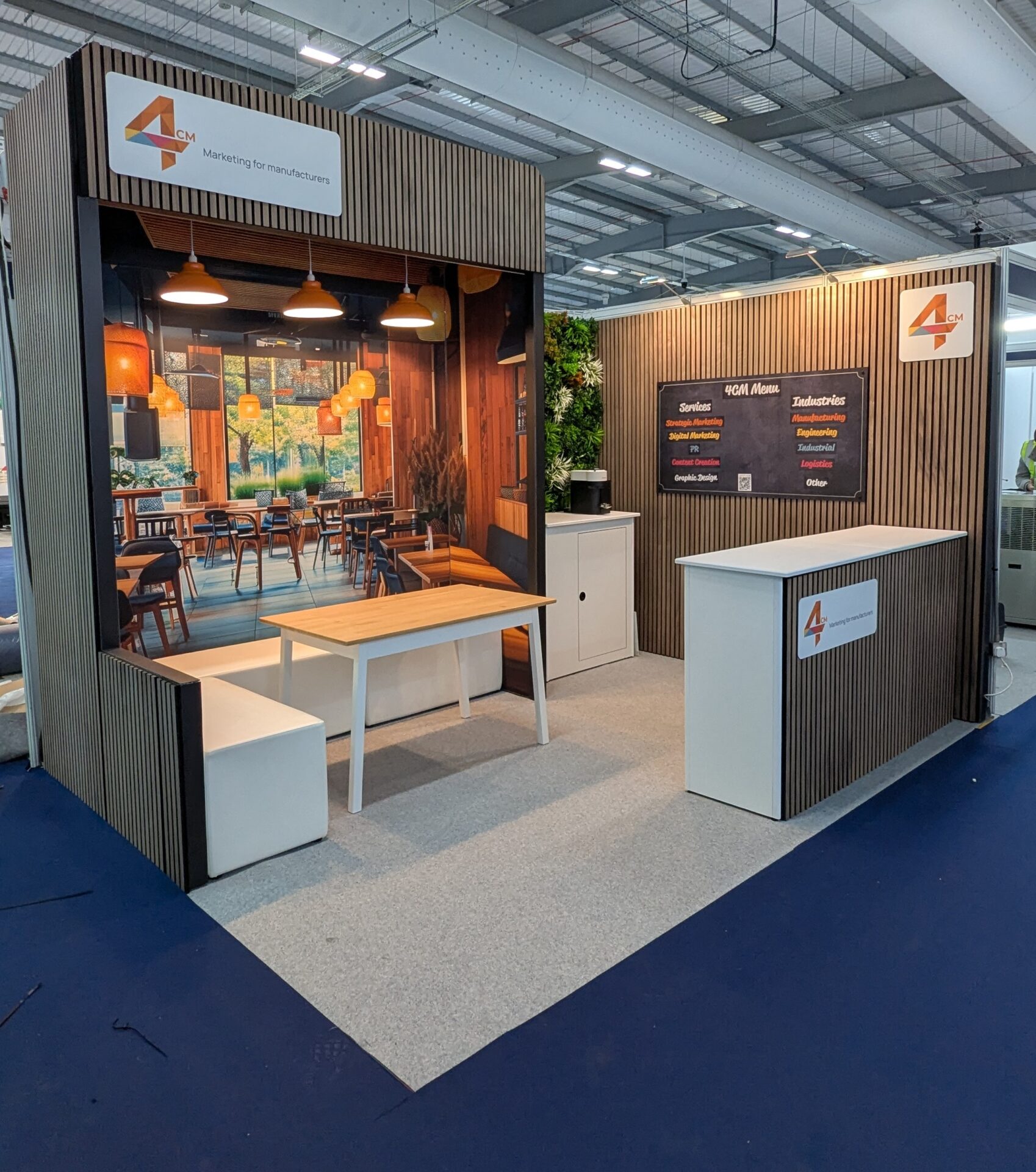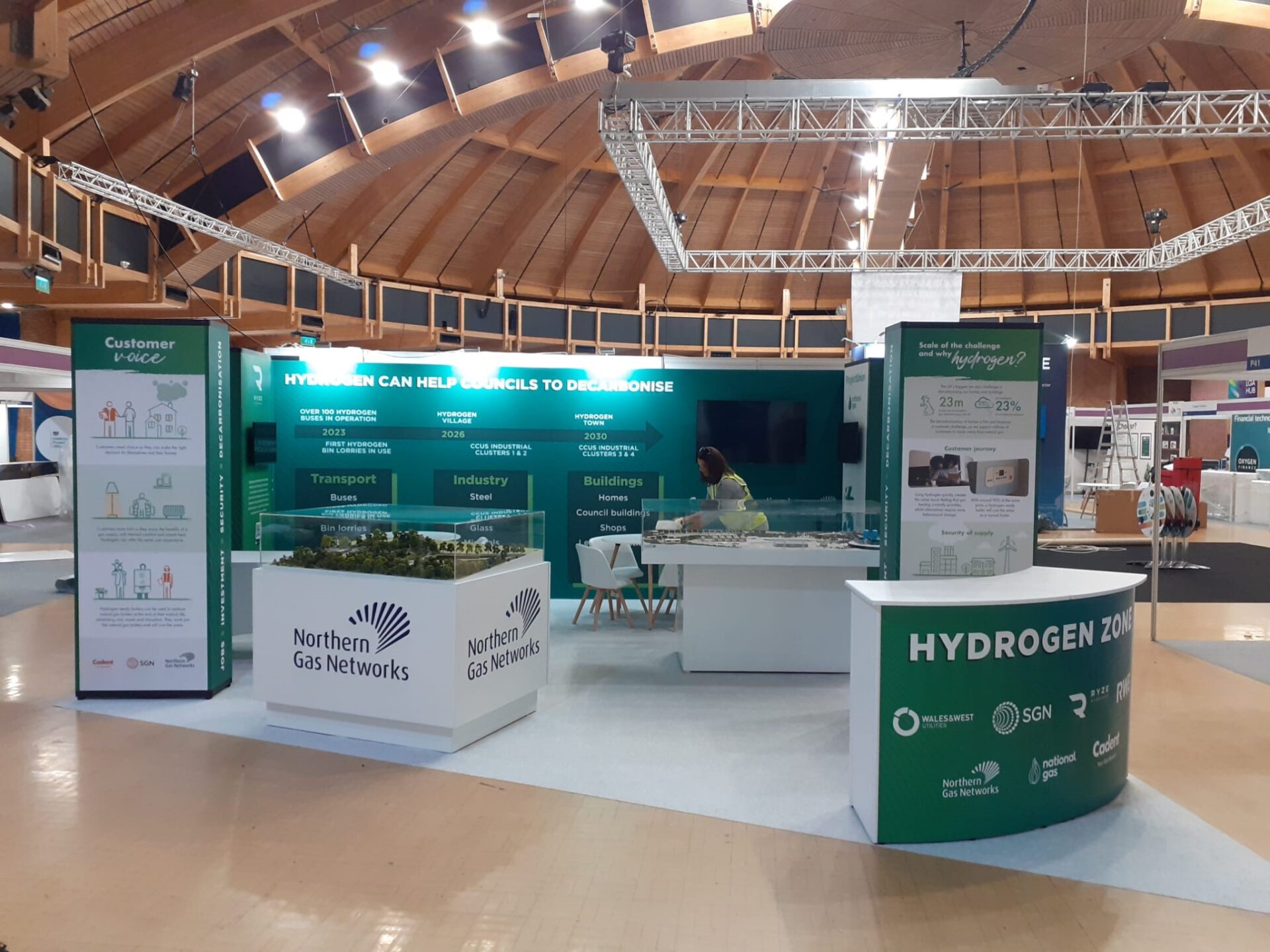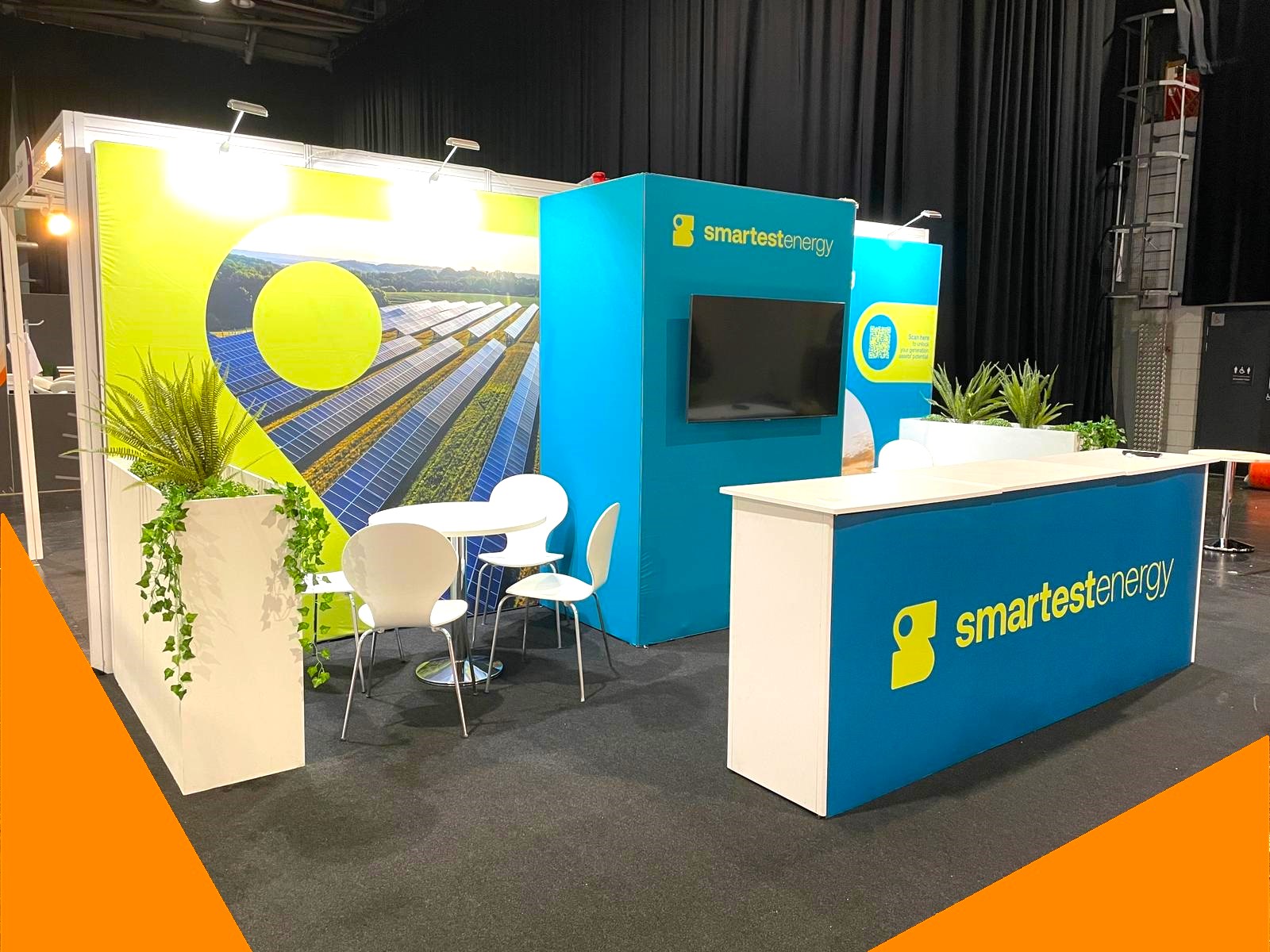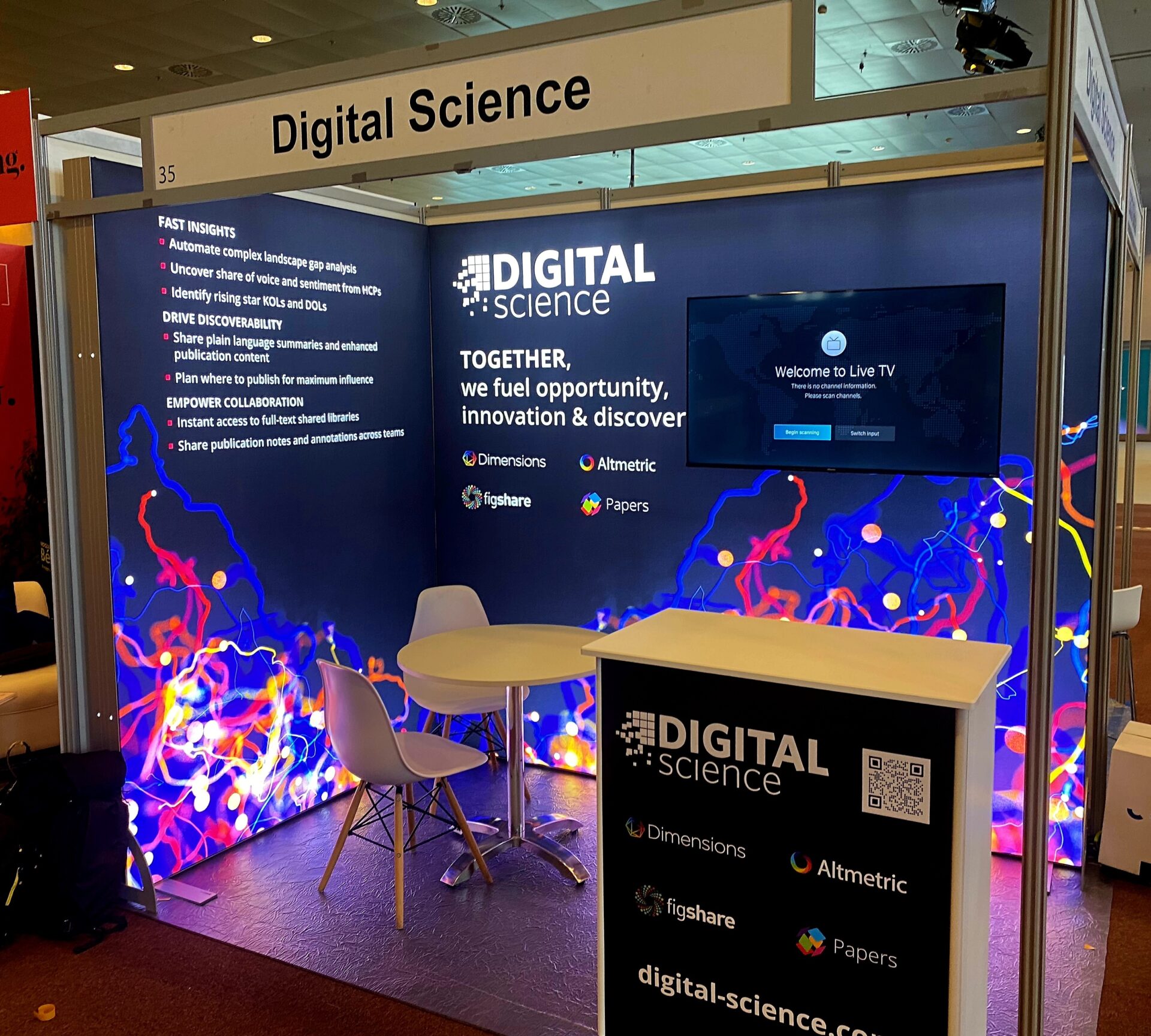Strategic design plays a crucial role in shaping exhibition performance by influencing how an exhibition is perceived, experienced, and interacted with by attendees.
What is strategic design?
Strategic design is the intentional and thoughtful application of design principles to solve problems, meet goals, and create value in a way that aligns with broader strategies.
With exhibition stand designs we often speak to our clients about the functionality, look and feel of the stand they have in mind but, strategic stand design goes deeper; it integrates design into the decision-making process to ensure that the outcomes contribute to achieving long-term objectives, such as improving customer experience, enhancing business performance, or supporting innovation. It focuses on aligning design efforts with the vision, mission, and overall business strategy.
In essence, strategic design ensures that design is a driver of business success rather than just an aesthetic or creative exercise. It ensures that design choices serve a purpose and contribute to the overall success of a project.
 Strategic design tips For exhibition stand design
Strategic design tips For exhibition stand design
1. Clear objectives and messaging
- Focus on Goals: A strategically designed exhibition begins with clear goals. Whether it’s brand awareness, lead generation, or showcasing a product, the design aligns with the overarching strategy. This ensures that every element—whether it’s the stand layout, visuals, or interactive displays—supports these objectives.
- Consistent Branding: The design reflects a cohesive brand identity, making the exhibition instantly recognisable and reinforcing key messaging. This helps attendees connect with your brand more effectively.
2. Optimise your space
- Flow and Accessibility: Strategic design ensures the exhibition space is organised to facilitate smooth traffic flow. Thoughtful placement of displays, signage, and interactive elements on an exhibition stand can guide attendees’ movements and enhance their experience, preventing crowding and confusion.
- Maximizing Impact: By strategically planning the layout and utilising the exhibition space effectively, means designers can ensure high-impact areas, like product showcases or live demonstrations, are placed where they will attract the most attention.
3. Create an engaging visitor experience
- Interactive Features: Strategic design incorporates engaging, interactive features that captivate attendees. This could include touchscreens, VR experiences, or hands-on demonstrations that increase attendee involvement.
- Storytelling: A well-designed exhibition tells a story. The journey through the exhibit can guide the visitor through a narrative, highlighting key products or services and immersing them in a memorable experience that sticks with them long after the event.
- Multisensory Design: Engaging multiple senses (sight, sound, and even smell) can leave a lasting impression. Strategic design often incorporates multimedia elements like video, soundscapes, or scent to create a holistic and immersive experience.
- Data Collection: Strategic design also uses technology to gather data on visitor behaviour, interactions, and preferences. This data can help assess the performance of the exhibition and guide future design decisions.
4. Differentiation and innovation
- Stand Out: A well-thought-out strategic design ensures your exhibition is visually distinct from competitors. Unique and innovative elements will catch the eye of attendees, making your exhibit memorable and helping you stand out in a crowded space.
- Trend-Setting: By staying ahead of design trends, you can offer an experience that feels fresh, modern, and relevant, which can significantly enhance the perception of your brand.
5. Sustainability and efficiency
- Sustainable Design Choices: A strategic approach often includes the use of sustainable materials and energy-efficient solutions in the exhibition’s design, which can positively influence attendees’ perceptions of your brand as socially responsible. Choose a supplier who can offer eco-friendly event stands. At Starlight we offer a full range of sustainable display stands.
- Cost-Effectiveness: Strategic design also ensures that resources are used efficiently, avoiding excessive costs while maximising the exhibition’s visual and functional impact. Speak to us about your budget – we have options to suit all requirements.
6. Post-exhibition impact
- Continuing Engagement: A strong exhibition design doesn’t end when the event is over. Strategic design can include methods for ongoing engagement, such as digital content, exhibition follow-up emails, or social media integration, to maintain connections with attendees and keep the conversation going.
- Lead Conversion: Well-designed call-to-action elements—whether that’s a sign-up form, a QR code, or a follow-up incentive—can help turn interactions into tangible business results.
In summary, strategic design shapes exhibition performance by ensuring that every design choice is made with a purpose. It maximizes impact, drives engagement, and supports the goals of the exhibitor, while also providing visitors with a memorable and rewarding experience.
At Starlight we have a highly experienced team of designers that can help you maximise your exhibition performance through strategic design strategies. We offer free 3D design to all our clients.


